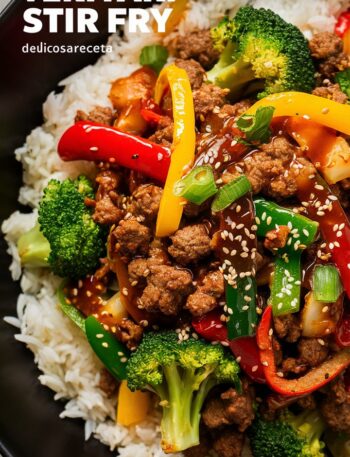Few dishes in the world can match the grandeur and universal appeal of Chicken Biryani. Known as the crown jewel of South Asian cuisine, biryani is more than just food—it is a culinary celebration. With its origins tracing back to the royal kitchens of India and Persia, this aromatic dish combines fragrant long-grain rice, marinated chicken, and a harmonious blend of spices that transport you to another world with each bite.
Whether served at weddings, festive gatherings, or as a comforting family dinner, biryani has earned its place as one of the most cherished rice dishes worldwide. In this article, you’ll discover not just a recipe, but also the history, techniques, health aspects, variations, and expert tips that make Chicken Biryani an unforgettable experience.
H1: What Makes Chicken Biryani So Special?
At its heart, biryani is a story of balance. Fluffy basmati rice absorbs the rich flavors of spiced chicken, while herbs and saffron add freshness and depth. The slow-cooking method (known as the dum technique) ensures that every grain of rice is infused with irresistible aromas.
But beyond taste, biryani carries emotional value. It connects generations—grandmothers passing down treasured spice blends, families bonding over shared meals, and food lovers across the globe discovering its magic for the first time.
H1: The History and Origins of Chicken Biryani
Biryani’s roots are often debated, but most historians agree it was introduced to the Indian subcontinent by Persian travelers and Mughal emperors. The word “biryani” is derived from the Persian word birian, which means “fried before cooking.” Over time, Indian chefs adapted the dish by incorporating regional spices, herbs, and cooking styles, leading to the countless variations we see today.
- Hyderabadi Biryani – Famous for its bold spices and layered dum technique.
- Lucknowi (Awadhi) Biryani – Mild, aromatic, and influenced by Persian flavors.
- Kolkata Biryani – Known for its subtle sweetness and the addition of potatoes.
- Pakistani Biryani – Rich, spicy, and often prepared with yogurt-based marinades.
Each variation carries the essence of its region, yet all share the same soul: rice, protein, and spices in perfect harmony.
H1: Why You’ll Love This Chicken Biryani Recipe
- Restaurant-Style at Home – Recreate authentic flavors in your own kitchen.
- Versatile for Every Occasion – From weeknight dinners to festive feasts.
- Customizable – Adjust spices, rice type, or add boiled eggs, paneer, or vegetables.
- Meal Prep Friendly – Tastes even better the next day as flavors deepen.
- Balanced Dish – A wholesome mix of carbs, protein, and spices with health benefits.
H1: Health Benefits of Chicken Biryani
Although indulgent, Chicken Biryani also offers nutritional advantages:
- Protein-Rich: Chicken supports muscle growth and repair.
- Antioxidant Boost: Spices like turmeric, cinnamon, and cloves fight inflammation.
- Digestive Support: Cumin and ginger aid digestion.
- Low Glycemic Index: Basmati rice helps regulate blood sugar better than regular rice.
- Balanced Nutrition: Combines protein, fiber, and healthy fats for a filling meal.
H1: Essential Ingredients for the Perfect Chicken Biryani
For the Chicken Marinade:
- 500g chicken (bone-in or boneless)
- ½ cup plain yogurt
- 1 tbsp lemon juice
- 1 tsp turmeric powder
- 1 tsp red chili powder
- 1 tsp garam masala
- 1 tsp coriander powder
- 1 tsp cumin powder
- 1 tbsp ginger-garlic paste
- Salt to taste
For the Rice:
- 2 cups aged basmati rice (soaked 30 mins)
- 4 cups water
- 2–3 green cardamom pods
- 1 bay leaf
- 1 cinnamon stick
- 4 cloves
- 1 tsp salt
For Layering:
- 2 tbsp ghee or oil
- 1 onion, thinly sliced
- 1 tomato, chopped
- 1 tsp cumin seeds
- ½ tsp turmeric powder
- 1 tsp red chili powder
- 1 tsp garam masala
- ¼ cup chopped cilantro
- ¼ cup mint leaves
- Saffron in warm milk (optional)
- Fried onions (for garnish)
H1: Step-by-Step Guide to Making Chicken Biryani
Step 1: Marinate the Chicken
Combine yogurt, spices, ginger-garlic paste, lemon juice, and chicken. Cover and refrigerate for 30 minutes (overnight for best results).
Step 2: Cook the Rice
Bring water, spices, and salt to a boil. Add soaked rice, cook until 70% done, then drain.
Step 3: Prepare the Masala Base
Sauté onions in ghee until golden. Add tomatoes and spices, cooking until soft. Stir in the marinated chicken and cook until tender.
Step 4: Layer the Biryani
In the same pan, spread chicken masala, then rice. Add herbs, saffron milk, and fried onions. Repeat layers.
Step 5: Dum Cooking
Seal the pot with a tight lid. Cook on low heat for 15–20 minutes. Let it rest before serving.
H1: Expert Tips for Perfect Biryani
- Use aged basmati rice for non-sticky grains.
- Don’t overcook rice—it must be slightly firm before layering.
- Always use a heavy-bottomed pot for even heat distribution.
- Add a few drops of rose water or kewra essence for restaurant-style aroma.
- Rest the biryani for 10 minutes after cooking before fluffing.
H1: Popular Variations of Chicken Biryani
- Hyderabadi Chicken Biryani – Extra spicy and layered with fried onions.
- Lucknowi Chicken Biryani – Mild, elegant, and fragrant.
- Sindhi Chicken Biryani – Rich with yogurt and tangy spices.
- Malabar Biryani – Coconut-based, popular in Kerala.
- Quick One-Pot Biryani – Made in an Instant Pot for busy days.
H1: What to Serve with Chicken Biryani
- Cucumber Raita – Cooling yogurt dip with cucumber and mint.
- Kachumber Salad – Fresh onion, tomato, cucumber salad.
- Pickled Onions – Tangy and crunchy.
- Papad & Chutney – Crispy side with spicy or mint chutney.
- Indian Desserts – Gulab jamun or kheer to end on a sweet note.
H1: Storing and Reheating Biryani
- Refrigerate: Store airtight up to 3 days.
- Freeze: Up to 2 months (thaw overnight before reheating).
- Reheat: Steam with a splash of water or microwave covered to retain moisture.
H1: Frequently Asked Questions (FAQ)
- Can I use brown rice instead of basmati?
- What’s the difference between pulao and biryani?
- How do I prevent mushy rice?
- Can I make it vegetarian?
- How long should chicken be marinated?
- Can I use boneless chicken?
- How do I make biryani less spicy?
- Can I cook biryani in the oven?
- Why is saffron important in biryani?
- What’s the best oil or fat for biryani?
H1: Conclusion – A Feast Worth Savoring
Chicken Biryani is not just food—it is an experience of flavor, culture, and tradition. From the aroma of basmati rice to the richness of spiced chicken, every element tells a story of culinary artistry. Whether you’re cooking it for the first time or perfecting your family recipe, this dish will never disappoint.
So gather your spices, soak your rice, and let the fragrance of biryani fill your kitchen. Once you serve it, don’t be surprised if it becomes the most requested dish at every gathering!




